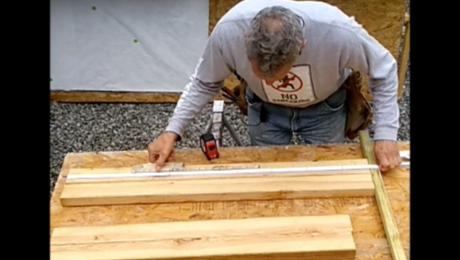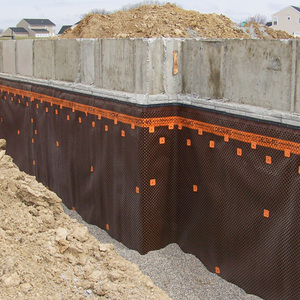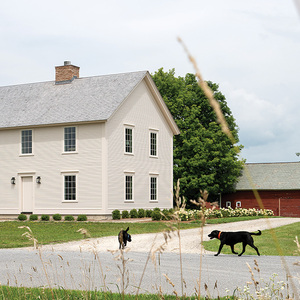fix small drywall holes – exterior wall
I need to repair and paint a room that has a number of holes punched through the drywall. one wall has dead-space behind it (about 2′) between it and the outside wall and one is an outside wall, both are vapor-barriered and insulated. A third dammaged wall covers a wall-cavity.
The holes mostly are in the ¼-¾ inch range, with a few at an inch, or larger – I’d guess vandals or a teen party gone a little wild (?); very rough, only some smaller holes approach round.
I’m looking for advice on how to fill them ready to paint the wall. Can they be filled with mud ? Should this go to the extreme and cut out larger sections, sister the studs, and put in larger pieces of drywall ?



















Replies
you can do your last suggestion, or use fibreglass mesh tape, and mud. or you can insert shims behind the openings, screw new drywall (cut to fit) and mud.
Expert since 10 am.
Jackplane is correct. Short pieces of flat stock, about four inches longer than the hole diameter, screwed to the sheet rock from behind and fill hole with small fitted pieces of sheet rock is the way to go. Once the rough sheet rock repair is in place, use open mesh tape and mud the whole thing with compound. Wait till it dries then apply second coat and your on the way to completion.
For these small holes do a "blowpatch". That is, cut the holes into squares or small rectangles, and cut the same size new drywall leaving the paper on the new rock exposed by 1-1/2", fill with joint compound or better use setting compound (faster drying. Make sure the compound is on the 4 sides of the new drywall and apply also the compound on the old wall so it will cover the new drywall facepaper. 2nd and 3rd coat and sand. No need to go to the next stud!
I think you are recommending what I do but I can't tell from the instructions. For holes smaller than 1": Fill the hole with mud leaving it well below the surface; after this dries mud and tape over the hole. This will take at least two coats.
If the hole is larger than 1" but smaller than 4x4, say the size of an electrical box, use the following method: Cut a piece of SR at least two inches bigger than the hole. From the back side, mark out a shape than is 1/4 smaller than the hole on all sides. Score the paper on the back around this shape. Bend the edges along these cuts and peel the core of the SR from the front paper. When you are finished, you should have solid SR a little smaller than the hole surrounded by at least an inch of face paper on all sides. Mud around the hole and around the solid SR in the patch. Press the mudded patch in place and squeeze out the extra mud. When dry, finish as you would any taped joint.
This method is fast, requires no backer and makes a very smooth and durable fix.
Yes, same thing but what I do is cut the square/rectangle on the old rock, get a new piece bigger than that, flip it around, and just score by eyesight the size of the hole on the old rock. Even for 1" hole I'd "blowpatch" it. 1/2" just mud and tape.
For a single small hole, I often glued a strip of joint tape to a patch with either Weldbond or 'super-glue', cut the hole the right size/shape (hadn't tried a hole-saw, but I've traced a lot of pieces of scrap); and then butter up the hole and plug, and pop it into the hole.
<!----><!----> <!---->
Phill Giles<!----><!---->
The Unionville Woodwright<!----><!---->
Yeah, that's what I do for medium-sized holes (from about 3" to 8-10"). A modification of the trick that may or may not work, depending on the brand of drywall, is to carefully tear the edges of the patch paper to achieve a feathered edge. (Some drywall facing papers feather nicely, others just develop a ragged edge.)For smaller holes just push a little newspaper behind (if needed) and mud. Bigger ones you should generally go stud-to-stud.But each hole is different, and there are a dozen different techniques (plus such things as mesh patches and special patch brackets available), so pick whatever seems like it'll work.Individual small holes in the vapor barrier are of little consequence. Larger ones may need patching, though, or if there are a number within a small area.
So convenient a thing it is to be a reasonable Creature, since it enables one to find or make a Reason for everything one has a mind to do. --Benjamin Franklin
I wad up a small piece of newspaper or paper towel and stuff it in the hole. Then I use joint compound over that.
George Patterson
There are various commercially produced drywall patches available at the home centers and hardware stores. I have used the perforated metal patches with adhesive on the back. They seem to work well but when coated with mud do raise the surfae up a bit. They are also a bit pricey. I used them to repair a 3"x4" hole that had a DWV pipe behind it that would not allow me to use some type of support within the wall.
After the insulation guys poked 7/8" holes all over my walls to blow in cellulose, they used corks a little over 1" in diameter and pounded them into the holes so that they were about 1/8" recessed and then filled the hole with mud. Worked quite well but buying the corks individually at my local hardware store runs over 50 cents each.
On larger holes, I generally cut a piece of lath, thin plywood, or scrap luaun to about 2" wider than the hole, then I put a drywall screw in the middle to use as a handle, coat the ends of the piece with adhesive caulk and insert it into the hole and pull on the screw to adhere it to back of the wall. So far, the adhesive caulk I have used has enough iitial tack that it holds the piece in place until it dries enough that I can remove the drywall screw and then mud the hold.
Why go thru the adhesive caulk step? If using ply that much bigger pull it tight with that center screw and put dw (aka Piffin screw) above and below hole, then mud away. I second the setting compound to speed it up.
Yeah, I have used screws at the end instead of caulk, but if you are using narrow scraps, you can split lath or shim stock (which I was using recently) and not all Piffin screws will easily go into plywood scraps when trying to hold onto the Piffin screw "handle". Also the last few I did was in cavities having Romex and I didn't want any chance of scuffing up the Romex - not too likely, but the caulk worked fine.
Understand, fine if you have time. f not too big a hole you can rout out a couple of grooves/slots and put small strips of wodd, metal lathe, whatever and mud over too.
Another option is to rig a "bridge" over the hole -- eg, a length of thin wood with spacers (small blocks of wood) at each end to hold it away from the wall. Slip your backer piece in with a piece of wire or twine around the middle, install the bridge, and tie the two together. Masking tape can hold the bridge in place if it tends to slip down. Then mud around/under the bridge your first layer and let it dry. Cut away the bridge and finish mudding.
So convenient a thing it is to be a reasonable Creature, since it enables one to find or make a Reason for everything one has a mind to do. --Benjamin Franklin
There are many ways and that is one of the good ones too. It all depends on what your schedule allows. I used to shy away from hot mud but it is the only way to go if trying to get-r-done.
I was over looking at the various metal patches, they do look thick, and certainly are spendy. I've tried the soft patches, sort-of a cloth joint-tape with adhesive on one side that sticks over the hole and gets covered in that rock-hard 90 stuff (real name escapes me this morning) - it worked, but I never felt good about it.
In this case, I have about 30-40 holes to fill, I've obviously filled larger holes with ply/shim/shingle backing screwed in (same trick with a screw used as a handle, I carry a few 4" drywall-like steel screws {Lee Valley used to sell these} for just that purpose) but I think that's a non-starter for this job.
<!----><!----> <!---->
Phill Giles<!----><!---->
The Unionville Woodwright<!----><!---->
30-40 holes, wow! Maybe it would be easier to cut out some large sections encompassing as many holes as possible and repair one very large hole.
I'll add one more technique for holes about 3/4".
Use a 2" hole saw by hand (without the pilot bit) to make a circular plug of drywall. Slice the plug in half so it's about 1/4" thick or a little less (a utility knife works well). Use the hole saw again to cut a hole halfway through the drywall around the hole to be fixed. Remove material from this hole to a depth of 1/4" or a little more. Butter the back of the plug with compound and stick it in place. Once dry, spackle as usual. No tape should be necessary.
This technique will not work if the hole in the drywall was "punched" through because the plug will not have solid backing.
I also like the "blowpatch" as described earlier, but I like to remove the paper from the wall where the flap of the new piece will sit. Otherwise, there's a slight hump in the wall.
-Don
I've used all these methods (except Doncando's 2" holesaw, might try it) with good success. One tip I can add, when patching with larger pieces, cut the patch first, then trace the patch piece on the wall and trim the wall area to fit. I don't know how many times I used to measure the hole and then try to cut an irregular piece to fit, only to shave, trim and swear until it was too small, then start again.
I like to use the quick dry compound as well.
I have used spray foam ,let it set ,scraped it down a bit and topped it with S.R 90 with a vandalized room.
Not a bad idea in some cases. You just want to be careful to not get the stuff on the edge of the opening (and fail to cut it away) where it will show as a spot when sanded down.
So convenient a thing it is to be a reasonable Creature, since it enables one to find or make a Reason for everything one has a mind to do. --Benjamin Franklin
Just to add to the list...
I've had success using my polyurathane foam gun to fill the hole (may need duct tape as the initial backing), then use hot mud to get it to the surface level. No cutting involved.
Rebuilding my home in Cypress, CA
Also a CRX fanatic!
Parenting has always been a mix of sage life advice and inexcusable laziness.
Well, I have lots of ideas now, thanks to all who responded. It doesn't look like there's a silver bullet or best practise out there. I have a couple of days to ponder it: probably use a mix of techiques depending on the size and grouping of holes.
<!----><!----> <!---->
Phill Giles<!----><!---->
The Unionville Woodwright<!----><!---->